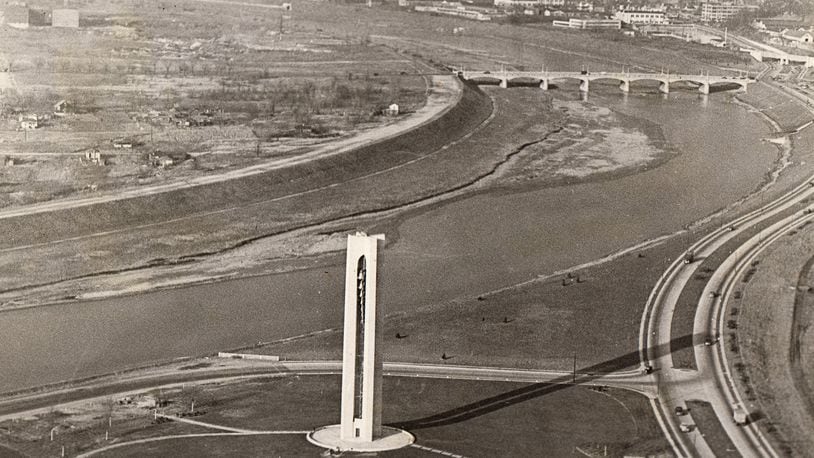1. A trip to Belgium. If Edith Walton Deeds had not traveled to Bruges, Belgium in the 1930s, Dayton might not know the sound of the Deeds Carillon.
Deeds reportedly fell in love with the sound during a visit to the country with her husband, Col. Edward Deeds, the automotive pioneer and former NCR chief.
A gift to the region from the couple, the 151-foot-tall tower, made of Indiana limestone, was originally designed with 32 bells. Eight of the first 32 bells were “silent,” each a memorial to a member of the Deeds family.
2. Almost 3 years to build a beauty. It took two years and nine months to construct the Dayton Masonic Center, according to the center's website.
The cost to build the Grecian-style building in 1926 was $2.5 million. The center estimates it would cost more than $40 million to construct today, though many of the materials would be difficult to find.
The building, at 265 feet long, 190 feet wide and 80 feet high, is filled with 20 train car loads of marble shipped in from three states.
3. One of Dayton's most beautiful lights. For more than three generations, parish families at St. Mary's Catholic Church, have hung a large illuminated star between the two towers of the church.
The process begins each year after Thanksgiving on Xenia Avenue in Dayton’s “Twin Towers” neighborhood, according to the church website.
Teams set up in the towers hand crank the star up with winches while teams on the ground guide the star into position, illuminating the neighborhood during the holiday season.
4. Amazing heroes rest here. The Dayton National Cemetery, established in 1867, encompasses nearly 100 acres and is the site of more than 35,000 burials.
Five recipients of the Medal of Honor, the nation’s highest military decoration, are buried in the cemetery, as is James Hobbs, the great-grandson of Tecumseh, the Shawnee Chief and Joshua Dunbar, the father of Dayton poet Paul Laurence Dunbar.
The cemetery was initially intended to be the “final resting place” for veterans who died at the Central Branch National Home for Disabled Volunteer Soldiers, according to the National Park Service, but now has veterans’ graves from every major U.S. military conflict including the Revolutionary War.
5. Massive cross. The blue dome of the University of Dayton's Chapel of the Immaculate Conception, is an icon of the campus.
The cross is 7 feet, 4 inches tall from the base ball to the top of the cross, according to the university, with the top of the cross reaching 95 feet from the ground.
The ball below the cross is 30 inches in diameter, the “arms” of the cross are 4 feet 6 inches, and each of the small towers is 10 feet tall.
6. Donated art and a petting zoo. The Dayton Art Institute was in the midst of construction when the Great Depression hit. Because the startup budget was dedicated to building, when the new museum opened in 1930 the galleries were filled with donated art.
To help draw visitors to the sparsely filled art museum Siegfried R. Weng, director of the new museum, added a petting zoo.
Exotic Demoiselle cranes, toucans, swans and peacocks roamed outdoors among the statuary and swam in a pool. Inside gold and blue cockatoos perched on branches next to Asian silk artwork and crowds gathered around a cage in a museum gallery to watch the antics of Skipper the monkey.
7. Origins of education. Chaminade Julienne Catholic High School in Dayton was originally a school for girls.
Twenty-one young women walked through the door of the new Notre Dame Academy for Young Women at Franklin and Ludlow Streets on May 4, 1886. The school was founded by five Sisters of Notre Dame de Namur who arrived in Dayton from Cincinnati on a canal boat in 1849.
Notre Dame Academy was eventually converted into Chaminade High School, the first tuition-free school for boys. In 1973 the Sisters of Notre Dame de Namur and the Marianists merged their two schools back at the corner of Franklin and Ludlow streets into Chaminade Julienne Catholic High School.
About the Author
